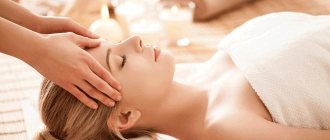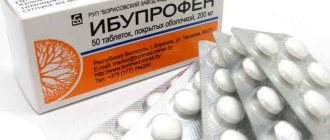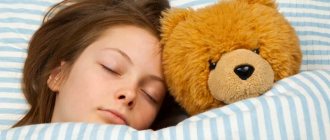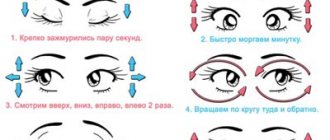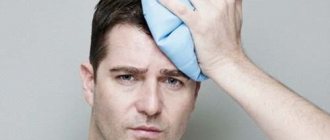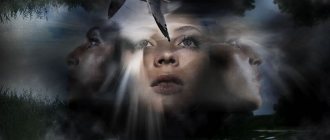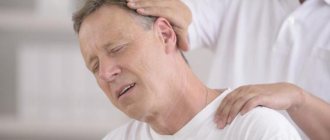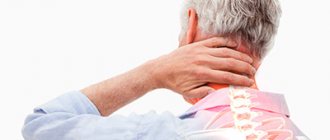Headache in the temple area bothers people of all ages. Some people experience headaches in the left temple or the right, while others suffer from pain in both temples. At the Yusupov Hospital, doctors first use a comprehensive examination to determine the cause of the headache in the temple. Treatment is prescribed depending on the type of pain.
Neurologists, therapists, and oncologists collectively establish a diagnosis and develop patient management tactics. Professors and doctors of the highest category use innovative methods of headache therapy. The medical staff is attentive to the wishes of patients. Psychotherapists provide support to patients with unstable emotional states.
The main causes of pain in the temples
Headache in the right or left temple can be caused by various reasons. It can have a pulsating, pressing character, and less often it can be cutting. A severe aching headache in the temple area often occurs in the morning, which forces the patient to wake up before the alarm clock.
Attacks of headaches in the temples come unexpectedly. If you have a headache in the temporal region, you should immediately contact a therapist at the Yusupov Hospital. He will conduct an initial examination and prescribe an examination. After receiving the research results, the therapist refers the patient to a neurologist, cardiologist or oncologist. If necessary, patients undergo a complex examination and receive consultations from leading specialists from partner clinics.
The most common cause of frequent headaches in the temples is considered to be pressure drop. Seizures can occur due to some disease. There are more than two hundred main causes that can cause headaches in the temples. The most common causes of temporal headaches include:
- disruption of the circulatory system;
- viral and bacterial diseases;
- age-related changes in the body;
- intoxication;
- trigeminal nerve entrapment;
- hormonal dysfunction;
- carious teeth.
It is worth noting that absolutely any pain that is felt in the facial area can provoke the appearance of temporal pain. The true cause of a headache is difficult to identify. Constant headaches in the temples and forehead often bother people who lead a busy lifestyle, get tired, and get little rest.
Types and causes of occurrence
There are 4 main types of pressing headaches:
- Liquorodynamic (character - bursting, often presses on the eyes).
- Cephalgia of muscle tension (with compression of the muscles of the cervical region).
- Vascular (pulsating pain due to increased pressure in the blood vessels of the head).
- Neuralgic (the nature of cephalgia (headache) is piercing, acute).
The reasons that provoke an attack include:
- ischemic disorders (insufficient blood flow to the brain due to vasospasm);
- hypoxia (lack of oxygen);
- irritation of nerve endings;
- general tension in the neck and head muscles;
- traumatic brain injuries and neck injuries;
- diseases of the spine;
- infections (viral and bacterial);
- acute or chronic inflammation in the paranasal sinuses;
- cardiovascular pathologies (including hypertension);
- poisoning (including intoxication with ethanol and its decomposition products).
Please note: Women are more likely to suffer from pressing headaches.
Predisposing factors are:
- poor nutrition;
- weather sensitivity;
- hormonal imbalance;
- stress and its consequences (anxiety and depression);
- physical fatigue;
- sleep disorders;
- fasting (for example, against the background of a restrictive diet);
- change of climatic zones;
- taking certain pharmacological agents (tranquilizers, analgesics, drugs with caffeine, etc.).
Types of pain in the temples
Any headache in the temples and eyes is characterized by sharpness and suddenness. If the pain syndrome occurs due to overwork or emotional turmoil, the duration of a temporal headache can be 30 minutes or can last 24 hours. If a throbbing headache in the temples occurs in the morning, it can be assumed that its cause is vascular disorders. This pain is accompanied by general weakness, nausea, and tinnitus.
Headache in the temple area due to trauma can manifest itself in different ways: pulsation in the temples, movement of the source of pain from the temporal lobe to the occipital lobe. If appropriate measures are not taken, acute pain can become chronic.
For persistent headaches in the temples, the causes of which are unknown, doctors recommend that the patient keep a diary. It should note the number and nature of headaches and how they are relieved. Thanks to these records, it will be easier for a specialist to get a picture of the course of the disease.
Diagnostic measures
It can be difficult to find out the cause of discomfort in the temple area, so a comprehensive examination is carried out. Diagnostic measures:
- consultation with a therapist, neurologist;
- X-ray of the cervical spine;
- EEG (to exclude epileptic activity);
- CT scan of the cervical spine;
- Ultrasound of the vessels of the head and neck.
If the examination results do not find the cause, it is worth visiting a psychologist or psychotherapist. Perhaps the pain appeared due to nervous tension, which the doctor will help to work through.
How to get rid of pain in the head and temples
If a severe headache in the temples occurs at home, you can try to get rid of it without resorting to drug treatment. The choice of a method to reduce temporal pain should be approached carefully. You can do a head massage yourself. Find a comfortable position and start massaging your head with your fingertips. If a headache occurs in the right temple, start making massage movements on the right side of the head, if in the left - on the left. Then run your fingers all over your head, including the temporal, occipital, and frontal areas. When you finish the massage, remain in a relaxed state for a few minutes.
Temporal headaches may go away after taking a warm shower. The patient's blood circulation to the brain improves, which allows him to get rid of headaches. The bath relaxes, which will also help relieve pain. Walking in the fresh air for half an hour can reduce headaches in the temples, which are caused by migraines. If, after attempts, the headache in the temples does not go away, contact the Yusupov Hospital.
When to contact a specialist
The appearance of a throbbing headache is already a “bell” that you need to see a doctor and get checked. And few people know that there are situations that oblige the patient to contact a specialist to alleviate the condition, and sometimes even save a life.
If you notice that:
- The pain lasts for more than one hour, and medications do not help.
- The pulsation becomes stronger, despite the fact that the patient does nothing.
- Pain in the occipital region appears immediately after a person wakes up or awakening occurs due to unbearable sensations that do not allow doing anything.
- A buzzing sensation is often felt in a certain area of the head.
- The pain causes dizziness, nausea, vomiting, partial paralysis, clouding of consciousness, and inability to speak normally.
- Intense pulsating beats that do not stop for several days.
- Changes in blood pressure, which are accompanied by headaches.
- The nature of the throbbing pain constantly changes.
If you notice any of the above changes, you should immediately consult a doctor or an ambulance, as serious problems may be hidden behind this.
Non-drug methods for treating temple headaches
Non-pharmacological treatment methods used by specialists at the Yusupov Hospital rehabilitation clinic are aimed at the main mechanisms involved in the formation of headaches. Among them, the leading ones are psychological factors (acute or chronic emotional stress), and muscle tension - myofascial, muscular-tonic, syndromes with the formation of trigger pain points.
The criteria for the use of non-drug treatments are:
- insufficient effectiveness of drug therapy;
- individual intolerance to drugs and or the occurrence of allergic manifestations when taking pharmacological agents;
- the patient’s tendency to become addicted and dependent when taking antidepressants and tranquilizers, which are widely used in the treatment of pain in the temporal region;
- development of abusive headaches with long-term use of analgesics in large doses;
- no contraindications to the use of non-pharmacological methods.
Pain is always a mental phenomenon. The longer and stronger the pain, the more often it is combined with anxious, depressive, hypochondriacal reactions, which can be primary or secondary. The duration and degree of pain affect the patient’s well-being and behavior. Under the influence of pain, personality traits, attitudes towards the world around us, ourselves, and the future change. Psychological correction carried out by rehabilitation clinic specialists is aimed at changing these negative influences, at the following points:
- improved personality functioning;
- correction of the patient’s experiences associated with the presence of constant long-term or paroxysmal recurring temporal headaches;
- elimination of existing emotional disorders.
Doctors at the Yusupov Hospital begin psychological correction from the very first conversation with the patient. The patient is given hope for improvement, anxiety is reduced, and he is encouraged to recover. In addition to an explanatory conversation, psychologists are in a state of hypnotic sleep.
Autogenic training includes:
- relaxation of skeletal muscles;
- regulation of regional heart rate, vascular tone, depth and frequency of breathing;
- mental relaxation through specially selected verbal formulas.
Breathing-relaxation therapy combines elements of mental and muscle relaxation with excursions of the chest in an inhalation-exhalation rhythm. Acupuncture is based on stimulation of strictly defined areas of the skin and subcutaneous tissue in the area of biologically active points. Postisometric relaxation is a technical type of manual therapy. It is used to induce muscle relaxation and pain relief.
Biofeedback is a method as close as possible to testing physiological functions. It differs from others by actively involving the patient himself in the treatment process. The method is based on biological control of physiological functions.
Light therapy is a method of exposure to bright white light. Through the retina, hypothalamus, and pineal gland, it affects circadian rhythms, the activity of melatonin receptors located outside the pineal gland, nonspecific brain systems, and changes endocrine, mental, and motor functions.
Symptoms
Characteristic symptoms of a pressing headache requiring treatment:
- simultaneous or alternate coverage of the frontal, occipital and temporal regions;
- feeling of pressure on the main focus;
- predominant localization on the right or left;
- spread from the neck to the back of the head and to other areas of the head;
- monotonous in nature (aching sensations usually do not tend to intensify).
Symptoms that are very pronounced and do not disappear after taking analgesics, parallel to which nausea and vomiting occur, may indicate the development of dangerous pathologies such as encephalitis, brain abscess, etc.
Pressure on the eyes often indicates increased intracranial pressure or temporomandibular joint disease;
With otitis media, pain syndrome often develops in the temporal region.
Burning and squeezing cephalalgia, accompanied by dizziness, loss of consciousness and visual impairment, is observed with osteochondrosis of the cervical spine.
Drug treatment of temporal headaches
When choosing a treatment method for headaches in the temporal region, doctors at the Yusupov Hospital take into account the reason why it occurs. Treatment for tension headaches includes relief of painful episodes and preventative treatment.
In order to interrupt an attack of headache in the temples, simple analgesics and non-steroidal anti-inflammatory drugs are prescribed. Treatment with these drugs should be used when the frequency of attacks is no more than twice a week. The use of simple analgesics should not exceed 14 days per month. The use of any medications for pain relief is monitored by keeping a diary. In patients with chronic headaches and comorbid depression and anxiety, simple analgesics are usually ineffective, and excessive use of nonsteroidal anti-inflammatory drugs can lead to the development of drug dependence.
Patients are prescribed ibuprofen at a dose of 400 mg. It has the least potential to cause gastrointestinal complications. Frequent use of paracetamol in large doses can cause liver damage.
Preventive therapy is carried out for patients with chronic tension headaches. Antidepressants are most often used to prevent pain in the temples. Their effect is due to their own analgesic effect due to increased activity of descending analgesics. The analgesic effect of antidepressants occurs earlier than the antidepressant effect itself and when using smaller doses. The drug of first choice is amitriptyline. Other tricyclic and tetracyclic antidepressants, maprotiline, clomipramine, and mianserin, are also used.
For severe headaches in the temporal region, you can take a simple analgesic or ibuprofen. If the pain does not go away, seek specialized medical help by calling the Yusupov Hospital.
Daily headache: causes, diagnosis
The rhythm of life of a modern person constantly involves receiving and processing a huge amount of different information. Therefore, frequent headaches have become quite commonplace, and everyone has long identified for themselves the medications that best eliminate discomfort. However, when the pain goes from episodic to chronic daily, then it is worth seriously thinking about this issue.
There may be many reasons for the development of constant headaches, as well as their types. Sometimes identifying the factors that cause pain is as difficult as treating it. And paradoxically, long-term use of analgesic drugs also provokes chronic headaches. They cause some discomfort, reduce the quality of life and performance, and therefore require appropriate measures.
Causes of frequent headaches
It is often difficult for doctors to differentiate patient complaints and establish the root cause (or primary form of headache), which then transformed into chronic headache. The most common factors leading to headaches:
- Circulatory disorders of the brain associated with vascular diseases (thrombosis, atherosclerosis, narrowing of the lumen of the bloodstream).
- Disturbances in the blood supply to the brain associated with compression of blood lines by vertebral structures (overgrown osteophytes, herniated intervertebral discs, displaced vertebrae, tumors of various etiologies, etc.).
- Sudden changes in blood pressure (hypertension, hypotension).
- Consequences of traumatic brain injury or damage to the cervical spine.
- Dysfunction of the central nervous system innervating the brain.
- Prolonged physical or psychological stress, chronic stress.
- Intoxication of the body with various toxic substances.
- Acute infectious or viral diseases.
- Damage to the body by parasitic infestations.
Features of chronic headaches
A study of the clinical manifestations of persistent headaches indicates that they do not have specific symptoms. The nature of the sensations during an attack is usually moderate, monotonous, less often pulsating, and even more rarely squeezing, like a hoop on the head or a helmet.
With tension, the pain may intensify. Localization of sensations: occipital, parietal, frontal temporal lobes. In some cases, daily pain is accompanied by photophobia (photophobia), phonophobia (sensitivity to noise), a feeling of anxiety and fear, a desire to hide and close off from everyone, nausea, less often vomiting, or a complex of several manifestations.
Chronic pain intensifies with physical overexertion, after stress, emotional outbursts, with sudden movements of the body or head, lack of sleep, unhealthy or insufficient nutrition, abuse of alcohol and smoking, caffeine, and when the weather changes. Have a beneficial effect on the course of the disease: regular rest, good sleep, nutrition, adequate physical activity, walks in the fresh air.
Another feature of constant pain syndrome is its combination with various comorbid symptoms. These are a variety of autonomic pathologies, emotional disorders, affective and depressive states, somatic and cardiovascular abnormalities, and malfunctions of the respiratory and digestive systems. Moreover, many manifestations are hidden or “disguised” in nature, which complicates diagnosis and, consequently, the prescription of adequate treatment.
Primary headaches
Arterial hypertension. Hypertension or high blood pressure is a common cause of headaches. There is a risk of stroke or vascular dementia. May indicate problems with the adrenal glands. Usually accompanied by nausea, vomiting, a feeling of rotation of the surrounding space, increased sweating, weakness and trembling of the fingers.
Migraine. Quite often it develops into a chronic form. As a rule, it is a genetic hereditary disease transmitted through the female line. Accompanied by autonomic disorders, photophobia and noise sensitivity, vomiting, aura, the presence of affective disorders, and depressive states. Sometimes visual and auditory hallucinations, visual disturbances, and speech disorders are observed.
Tension headache. It occurs in the parietal and occipital parts of the head, usually in the evening after a hard day of work. Has a dull, aching character. Releases after physical and mental relaxation, rest, after a hot bath and a cup of soothing tea. With constant overwork, it quickly develops into a chronic form with a decrease in the intensity of pain, but at the same time with their increase. Accompanied by mental and depressive disorders.
Abuse pain. Associated with drug abuse. Accompanied by: nausea, vomiting, increased blood pressure, tachycardia, anxiety, sleep disorders, depression.
A fairly common cause of chronic symptoms in economically developed countries, where over-the-counter sales of analgesic drugs, barbiturates, salicylates, etc. are practiced. The dosage used and the parallel use of other pharmaceuticals are of particular importance. Another important fact is that this form of chronic headache develops in people suffering from migraines or other forms of cephalalgia, and abuse of analgesics is almost never observed in patients taking them for other reasons.
Atherosclerosis. Narrowing of the lumen of the bloodstream of the brain as a result of the formation of cholesterol plaques on the walls of blood vessels. In this case, insufficient blood supply to the brain or fluid stagnation leads to oxygen starvation, a slowdown of all processes and chronic headaches. Accompanied by: insomnia, fatigue, decreased performance, irritability, mental disorders, memory impairment. They occur at any time of the day and are aggravated by physical activity and consumption of alcoholic beverages.
Differentiation and diagnosis
For a doctor, it is of great importance to collect an anamnesis of the disease, in which it is desirable to identify the age and reasons that provoked the initial attack of pain. For example, migraines and tension headaches begin to bother patients at a young age, and seeking help after 35 years of age may indicate the development of serious brain diseases.
Information about the duration, frequency of attacks and the intensity of the initial attacks will help to differentiate the signs of different headaches. Thus, prolonged and periodically recurring attacks with a pulsating character indicate the vascular origin of the symptom. A squeezing, squeezing pain, like a hoop on the head, is inherent in muscle overexertion. An acute, rapidly developing state of chronic pain can be triggered by a serious illness (stroke, subarachnoid hemorrhage, etc.).
Mild, but gradually increasing headaches over the course of a week may be a sign of a developed brain tumor. Daily headache attacks are not typical for migraine; they usually occur no more than twice a week and are preceded by nervous tension, stress, or consumption of a certain food product. Usually the pain begins in the morning (perhaps even very early) and subsides in the evening after taking certain measures. The morning occurrence of a dull, aching sensation may also indicate increased intracranial pressure.
Localization of headaches:
- Migraines are usually unilateral and involve the frontotemporal lobe and vertex. There is a desire to pull a warm scarf over your head.
- Bundle cephalalgia always has a unilateral manifestation.
- Tension headaches evenly surround the frontal and occipital lobes, sometimes localized on the top of the head.
- Severe shooting pains in the temporal area may indicate other pathologies. For example, about inflammation of the trigeminal or facial nerve, dislocation of the mandibular joint, in older people - about the development of temporal arteritis, etc.
Author: K.M.N., Academician of the Russian Academy of Medical Sciences M.A. Bobyr
